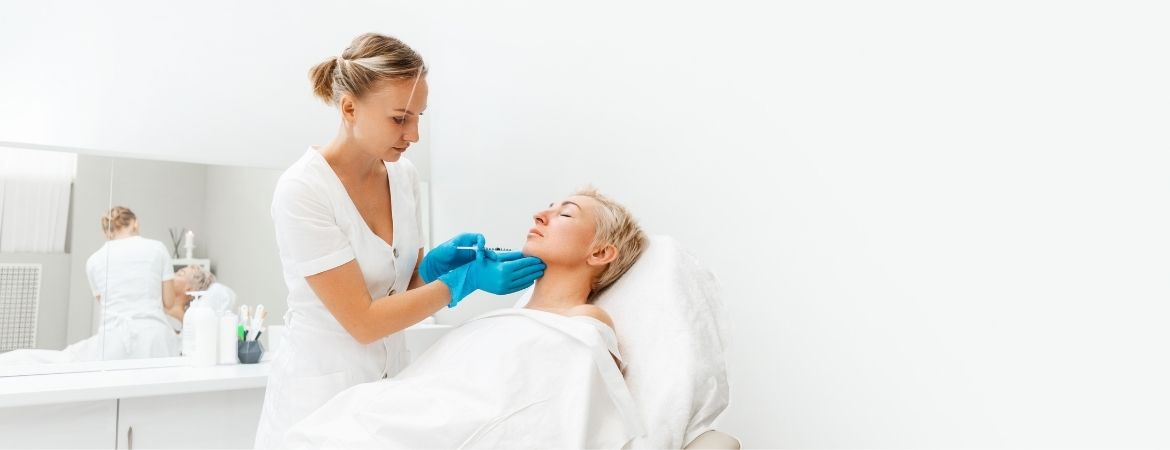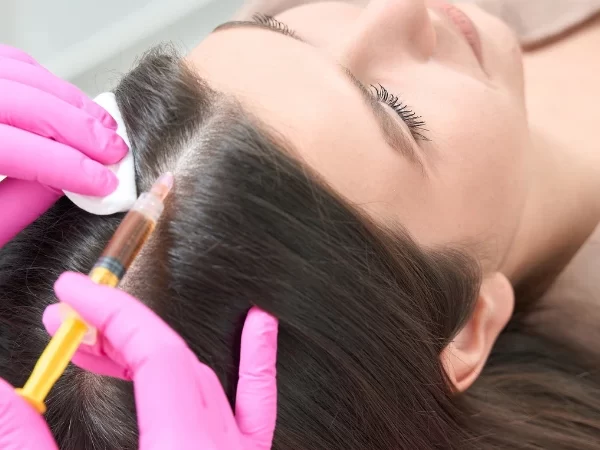
Jawline (chin) filler is a non-surgical procedure used to enhance the appearance of the jawline, altering its contour and definition. Jawline filler can make the jawline appear sharper and more defined, contributing to a more youthful look. This procedure, which is suitable for patients with gaps or depressions in the jaw line, increases the clarity between the face and neck. Chin filling procedure can be a satisfactory option for people who want a more prominent jaw line without resorting to surgical methods. Chin filler is a relatively simple procedure typically performed by doctors in an office, aesthetic clinic, or clinic setting. In this treatment method, which is an alternative to cosmetic surgery, temporary fillers are injected into the soft tissues on the jaw line. In this article, we will try to give detailed information about what is curious about chin fillers. For more information on these fillers, please continue reading.
Table of Contents
ToggleWhat is Jawline (Chin) Filler?
Non-surgical chin filler, one of the most preferred procedures in chin aesthetics, is a procedure performed to enhance the jawline using dermal filler materials, aiming to give the face a more youthful and attractive appearance. As a result of this procedure, different problems such as loss of symmetry, pitting and irregular appearance on the jaw line can be corrected and the jaw line can be reshaped in accordance with the face shape.
At this point, chin filler is not only used to obtain a more prominent and harmonious jaw line with the face. Thanks to the properties of filling materials such as hyaluronic acid and calcium hydroxyapatite used in the procedure, it also provides a smoother, wrinkle-free skin and a younger appearance. The HA used for jawline fillers is specifically formulated for use in the chin area.
Common jawline irregularities include volume deficiency, an overly large chin, a chin that’s set back too far, an indistinct jawline, sagging under the chin, and asymmetry. Irregularities in the jaw area can directly impact other areas of the face. As a result, many people may not realize that aesthetic flaws in different parts of their face are related to chin-related issues.
During the chin filler procedure, the skin is first cleaned and numbed. Then, a thin needle is used to inject the filler material into pre-determined points in the lower jaw area. These filler materials fill in voids beneath the skin and add volume to define the jawline. Swelling and redness that may occur after the procedure typically subside within a few days.
How Long Does Chin Filler Treatment Take?

Chin filling is a procedure performed in a single session lasting 30-45 minutes in total. Although this time may vary depending on the filling material used, the experience of the physician and the patient’s condition, the application of the filling procedure is a very short procedure that takes 15-20 minutes. When the time required for the anesthesia to take effect is added, the total session time is determined. It is normal to see redness and swelling after the application, it usually returns within a few hours. After the procedure, people who have the application can return to their daily work without wasting any time. If a touch-up is needed during a follow-up examination after the treatment, an additional injection may be necessary.
Aftercare for Dermal Fillers
The post-procedure process after getting jawline filler can vary depending on an individual’s skin type and their adherence to recommended care guidelines. Generally, there is minimal disruption to a person’s daily routine after jawline filler, and they can continue with their normal activities seamlessly.
After the filler procedure, there may be mild swelling, redness, and sensitivity in the facial area. This is a normal reaction and typically decreases and disappears within a few days.
In the day leading up to the filler procedure and for the two days following, it is advisable not to consume alcohol. Also, heavy exercise should be avoided for 24 hours after the procedure. For the two weeks following the treatment, it’s best to avoid excessive heat, such as saunas. Applying cold compresses to the treated area and protecting the facial skin from the sun, especially where the filler was applied, is important.
After a jawline filler treatment, the practitioner may request one or more follow-up appointments. During these follow-up visits, your doctor will assess the condition of the jawline filler, listen to any concerns or questions you have, and address any issues that may arise during the examination. Since dermal fillers do not provide a permanent solution, jawline fillers need to be refreshed over time. Most people opt for this renewal process once a year.
Risks and Complications
While dermal filler materials carry minimal risks, like any cosmetic procedure, getting jawline filler does come with some potential risks. These risks can vary depending on the individual’s skin type and the type of filler material used. The possible risks of jawline filler procedures include:
- Allergic reaction to the filling material.
- Asymmetric appearance in the filled area.
- Side effects such as swelling, redness, pain, tenderness, and bruising.
- Bumps that look like acne.
- Infection after the procedure.
- Tissue damage or scars.
- Skin discoloration, tenderness, and swelling.
These risks can be minimized with the right injection methods, the right specialist, and the right care practices.
How Much Does Chin Filler Treatment Cost?
The price of chin filler treatment varies according to many factors, so it is not possible to give a standard price. The person should consult a physician to learn the treatment plan specific to his/her condition and the price tariff to be applied for this. Factors affecting the price of chin filling include the filling material to be applied, the experience of the doctor who will perform the procedure, and the special conditions of the patient.



